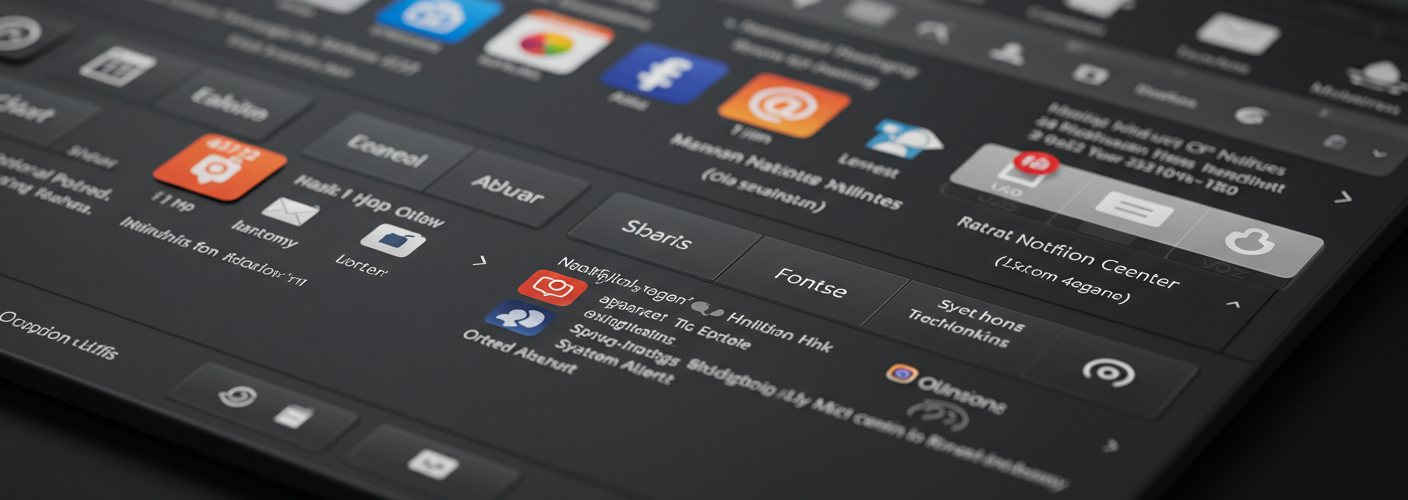Customizing Notification Centre with Windhalk: Combining Matter and TranslucentShell
The Notification Centre on [platform/device] is an essential feature for managing notifications efficiently. The ability to customize its appearance and functionality can greatly enhance user experience. For enthusiasts looking to promote aesthetics and usability, combining Windhalk’s Matter and TranslucentShell offers a unique approach. In this article, we will explore how to achieve this blend, focusing on the target variable for the entire Notification Centre.
Understanding Windhalk
Windhalk is a versatile tool known for its customization capabilities, particularly in how it manipulates system visuals and functionalities. It allows users to create unique interfaces by leveraging components like Matter (which manages content) and TranslucentShell (providing an interactive backdrop). By merging these two components, users can develop a Notification Centre that not only serves its purpose but also aligns with their visual preferences.
The Role of Matter and TranslucentShell
Before diving into the combination process, it’s vital to grasp the roles of Matter and TranslucentShell:
- Matter: This component deals with the content presented in the Notification Centre. It allows users to customize how notifications are structured, their order, and how they appear. Matter focuses on functionality while ensuring that the incoming notifications reflect the user’s needs.
- TranslucentShell: On the other hand, TranslucentShell manages the visual layer behind the notifications. It provides a backdrop that can either be transparent or semi-transparent. This feature is particularly valuable as it offers depth to the design, creating a more immersive experience when interacting with notifications.
Combining Matter and TranslucentShell
To effectively combine Matter and TranslucentShell in the Notification Centre, follow these steps:
- Initialization: Start Windhalk and navigate to the Notification Centre customization section. Here, you will find options to adjust settings for both Matter and TranslucentShell.
- Configuring Matter: In the Matter settings, design your notification layout. Define how notifications should be formatted—this includes adjusting text size, notification icons, and their arrangement. Consider the target variable for the entire Notification Centre, which ensures consistent styling across all notifications.
- Setting Up TranslucentShell: After finalizing the content structure, go to the TranslucentShell settings. Here, you can adjust opacity levels, background colors, and transition effects. A good practice is to maintain harmony between Matter and TranslucentShell; ensuring that the background does not overpower the content is crucial.
- Testing the Combination: Once you have set your preferences, preview the Notification Centre before finalizing the changes. This step is essential to ensure that the notifications are both aesthetically pleasing and functionally efficient.
- Refinement: After reviewing the setup, it’s normal to make further adjustments. Whether it’s tweaking colors or rearranging notifications, this iterative process will help you achieve an optimal design.
Conclusion
Combining Windhalk’s Matter and TranslucentShell in the Notification Centre presents a fantastic opportunity for customization, allowing users to create a visually engaging and functionally robust interface. Focusing on the target variable for the entire Notification Centre ensures consistency and coherence in design. Whether you’re looking to enhance your productivity or simply change the look of your notifications, this combination allows for creative freedom. Embrace the potential of Windhalk and start crafting a Notification Centre that truly resonates with your style.





Add comment